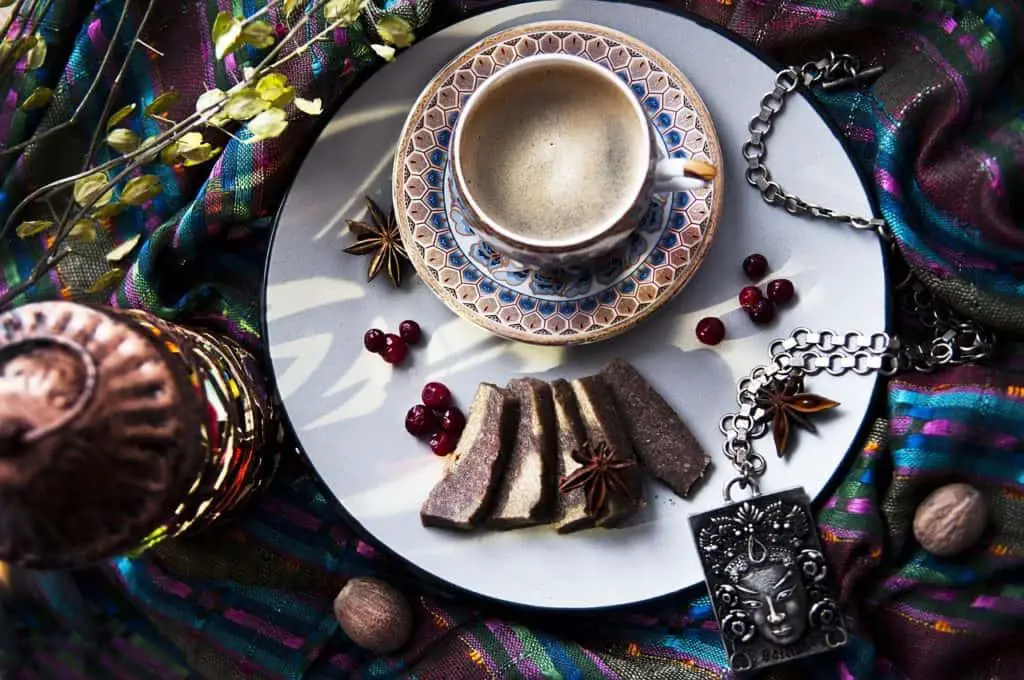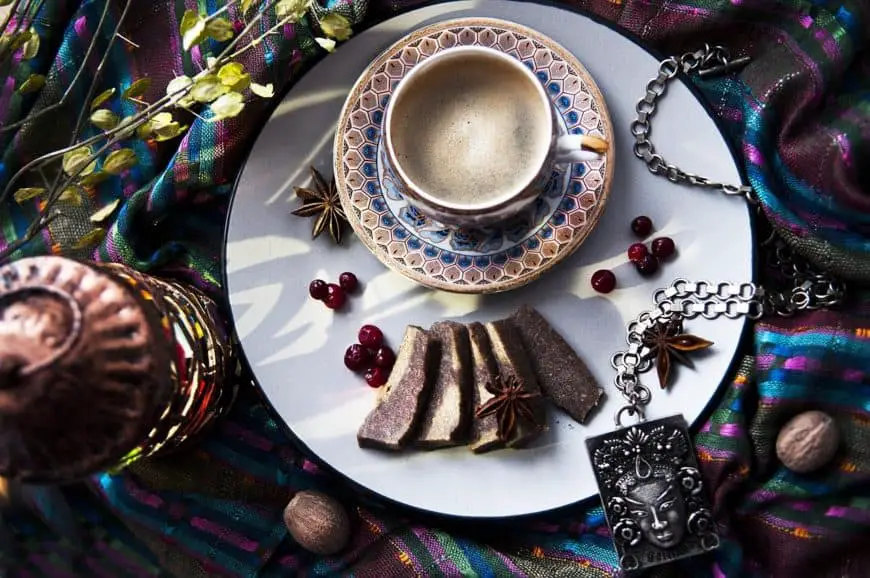
Drinking Monsoon Malabar coffee is a real treat. If your new to the coffee world (or remember when you had your first cup) you realize that the best cups of coffee are processed in some very interesting ways.
What is Indian Monsoon Malabar Coffee? Monsoon Malabar coffee gets its name from how the these beans are processed. The raw (or green) beans are exposed to the annual monsoon rains and humidity from India for 3 to 4 months. This gives the coffee lower acidity and a unique earthy flavor found only with this type of coffee
If you have never heard of or tried Monsoon Malabar Coffee though, don’t despair. Here, we will discuss all you need to know to peak your curiosity and, perhaps, give you an excuse to try a cup.
What is Indian Monsoon Malabar Coffee?
Coffee, once a luxury only afforded by the nobles of society, has become one of the most popular beverages in the world. Traditional coffee, much like the art of brewing the perfect cup of tea, has developed its own signature culture all over the globe.
From places like India to the American continents, coffees of various flavors and aromas can be found, inspiring the growth of unique cultures.
Monsoon Malabar Coffee, often referred to as Monsooned Coffee, is a popular signature coffee grown and processed in India. More specifically, it is created on the Malabar coast of Karnataka and Kerala, in the southwestern regions of India.
History of Monsoon Malabar Coffee
Monsoon Malabar Coffee gained its name from the region and conditioning the bean is placed through to obtain its unique flavor.
The process of making and preparing Monsoon Malabar Coffee was discovered purely by chance. During the time of the British Raj, while India was under the influence of the English, coffee was regularly shipped to Europe.
Having grown rich in popularity ever since the Venetian period, coffee was in high demand. Large shipments were stored and carried across the sea and took a long time to reach Europe, passing by the Cape of Good Hope on its way.
It was discovered that shipments that sailed at specific times of the year underwent characteristic changes through the course of its journey. It was also determined that the humidity and sea winds were behind these changes, which turned green coffee beans yellow.
With the improvement of shipping technology as the years went by, the quality of this imported coffee culture was drastically reduced. Due to better protection from the elements, the conditioning of the ripe, green coffee beans was reduced.
Because there has always been a high demand for Monsoon Malabar Coffee, a way to produce it naturally had to be developed. Thus, a different, natural process was implemented. This process can be replicated in the southwestern coastal regions of India, where the same humidity and sea winds are recreated during the monsoon months.
Hence the name, Monsoon Malabar Coffee, is an ideal fit. Today, the same coffee culture is prepared on the shores of India and shared from there with the rest of the world.
Production of this culture takes a long time and is carefully prepared with each passing season. Two variants of the culture are available, respectfully identified as Monsoon Malabar Arabica and Monsoon Malabar Robusta.
How Is Monsoon Malabar Processed?
The process of creating Monsoon Malabar Coffee is simple and straightforward. All of the flavoring conditions take place naturally and can be considered wholly organic.
The process does take some time, though, and has to be prepared during the correct season. The process normally starts with the plantation and harvest of Cherry Coffee beans. Once the finest quality beans are chosen, it is sun-dried in expansive, specially made areas. The dried beans are then seasoned and preserved before being divided into selections of quality or either A or AA.
From there, the beans are stored and protected until the beginning of the monsoon season. From June to September, the time of the monsoon, the beans are exposed to the winds and humidity of the Indian coast. The beans are placed in a warehouse with open and free ventilation for 12 to 16 weeks.
During this period of “monsooning the beans”, they are carefully handled and treated to gain the best results. To achieve the success that the Monsooned Coffee culture lives up to, it has to be spread, raked, and turned at regular intervals.
All of this has to be done so the whole plantation receives equal conditioning and ripens to the correct state. The beans absorb moisture from the wet sea winds, swelling its body and regulating its pH balance, eventually turning it a golden yellow.
By the end of the season, the beans are further sorted to select and divide fully Monsooned beans for packaging and shipping.
What Does Monsoon Malabar Coffee Taste Like?
The taste profile of Monsoon Malabar Coffee, which is produced because of the unique process, has a taste akin to its own culture. The flavoring has been described as full and intense with a boldly bodied taste. The pH balance of the bean which is unusual as it has a absolute neutral balance, thereby removing its acidity and giving it its unique flavor.
With a balanced pH level, the texture becomes thicker and fuller grained, losing its color and turning golden. The specific tastes, as considered by consumers, can be described as richly earthen. It is said to possess aromatic smoky and spicy flavors with a touch of malt sweetening.
Some have also described the taste as heavy and pungent, considering it along the lines of a musky, nutty, chocolaty profiled coffee culture.
How to Roast Monsoon Malabar Coffee
The roasting of Monsoon Malabar Coffee beans is done following the initial production of the beans. Although most people have their preferred roaste level, the recommended roast level for Monsoon Malabar Coffee beans to is a medium-dark, full-city roast. It can also be lightly roasted because of its low acidity.
When roasted to any of these two roasting preferences, the nutty and spicy flavors receive increased presence and bring out the natural sweetness. To get the best results during the roasting process, the beans are always roasted separately and not pre blended.. If at all possible and in order to get the full taste of this coffee try to get this coffee between 3 days to 2 weeks after its roasted.
What is the best brewing method for Monsoon Malabar Coffee?

Monsoon Malabar Coffee beans are most often used for espresso brewing. This is due to the lowered acidity of the bean as for this reason is not an ideal for as an iced coffee.
You could however, use this coffee for cold brew! The bolder taste is ideal for stronger brews, like espresso, a Bialetti Moka Pot, and cafe creme, although you can also use either a Chemex or V60 if you prefer the pour over method. As you can see its a very versatile coffee!
It can be drunk on its own (black) or or used as a base with other coffee blends. It blends best with other fruity or nutty cultured coffees, including Sidamo Coffee from Ethiopia.
This is also the perfect beverage to accommodate many dishes. Some of the most popular dishes includes desserts like chocolate puddings, shortbread, and even a simple biscotti. These flavors blend exotically with the coffee’s natural malt taste.
Final Thoughts
Coffee is a very popular beverage that has left its mark on history and modern social lives. With mass-serving cafes out there, enjoying the rare and wonderful tastes of coffee is becoming an everyday occurrence. Even modern-day hipster cultures are obsessed with finding that perfect brew of coffee.
Monsoon Malabar Coffee is a delicious culture with a very bold taste and lingering texture. It is best enjoyed in rich and strong recipes like espresso, and it pairs well with chocolate dishes. It cannot be enjoyed as an iced coffee, but when served in a hot, aromatic cup, there will hardly be anything like it.
Feel free to try this culture of coffee. One sip and you will be taken to the wild coasts of India where the monsoon winds howl and the sea roars. Undoubtedly, putting down your cup might become the most difficult thing to do. One sip is all you need to be blown away by its bold taste.
If you cannot find Monsoon Malabar Coffee from your local roaster you can go to sites like Amazon to pick up a bag.

